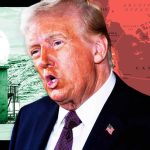Hundreds of products around the world have lost a key feature of their branding following the Queen’s death.
The Queen granted 620 Royal Warrants of Appointment to companies and tradespeople over her 70 years on the throne.
Many brands and companies with royal warrants include the royal arms on their packaging, making it a prominent feature of their branding.
But those seals of approval granted by the late Queen have become void.
Companies have two years to discontinue their use of the royal arms – unless their royal warrants are renewed in time by King Charles III.
The King will likely allow William, now the Prince of Wales, to grant royal warrants, along with Camilla, Queen Consort of the United Kingdom.
Between 20 and 40 royal warrants are cancelled each year, according to the Royal Warrant Holders Association, with a similar number of new warrants granted in their place.
Twinings tea got the royal seal of approval. Photo: Getty
What is a Royal Warrant of Appointment?
According to the Royal Warrant Holders Association’s website, the document appoints a company or individual in a trading capacity to the Royal Household.
The companies and individuals qualify if they have supplied products or services on a regular basis to the Royal Household for at least five out of the past seven years.
The honour also allows the companies and individuals to use the royal arms in connection with their businesses.
The Queen granted 620 Royal Warrants of Appointment during her reign, Prince Philip granted 34 as Duke of Edinburgh, and Charles granted 182 as Prince of Wales.
Each royal has their own arms, which companies and individuals can use in their branding in accordance with the Lord Chamberlain’s rules.
The tradition began in the 15th century, allowing suppliers to advertise that they supply to the royal family.
By Appointment to HM The Queen; By Appointment to HRH The Duke of Edinburgh and By Appointment to HRH The Prince of Wales. Photo: The Royal Warrant Holders Association
What brands will need to change their packaging?
Although an estimated 850 businesses in total hold a royal warrant, not all display the royal arms on their packaging.
Moet & Chandon and Cadbury, for example, have royal warrants granted by the Queen, but do not display royal arms on their packaging.
The brands that do will need to reapply for consideration, and erase them from their branding if they are denied.
Brands such as Twinings, Gordon’s and Heinz have all made the Royal Warrant of Appointment a key fixture on their branding.
Twinings first received a royal warrant from Queen Victoria in 1837, and has held one ever since.
Queen Elizabeth II enjoyed a cup of Twinings English Breakfast tea every morning, and gave the brand her stamp of approval.
Twinings will need to reapply for a royal warrant to continue using the royal arms, just like the hundreds of other brands recognised by the Queen.
However, given the brand’s long history with royalty, it’s unlikely that its royal warrant would not be renewed.
Heinz and Gordon’s Gin are two other companies that promote the royal arms on their packaging.
The Queen’s arms can be found above the Twinings logo. Photo: Woolworths
The Queen’s arms feature on the neck of Heinz glass sauce bottles.
Gordon’s Gin promotes its royal warrant on its packaging. Photo: Woolworths
Another company personally recognised by the Queen is Burberry – a fashion house known for its stylish trench coats.
The Queen and the Duke of Edinburgh bestowed Burberry Limited with its royal warrant in 1955, with the fashion house showing both sets of arms on some of its labels.
The Queen and Duke of Edinburgh’s arms feature on a Burberry coat. Photo: Burberry
Related articles:
How our coins and notes will change now that Charles is King
Kirstie Clements on the enduring style of Queen Elizabeth II
The post Expect a change of arms on supermarket shelves with the reign of King Charles III appeared first on The New Daily.






